Simon
Visit to download the full and correct content document: https://ebookmass.com/product/distributions-volume-3-1st-edition-jacques-simon/
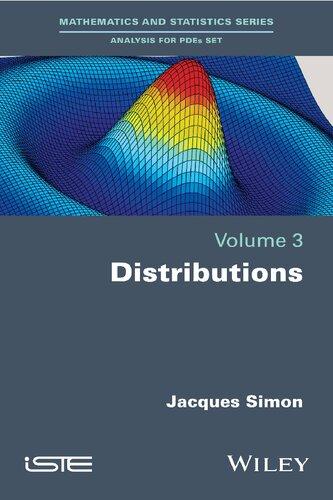
More products digital (pdf, epub, mobi) instant download maybe you interests ...
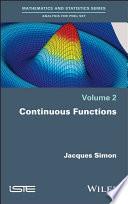
Continuous Functions, Volume 2 Jacques Simon
https://ebookmass.com/product/continuous-functionsvolume-2-jacques-simon/
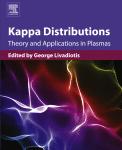
Kappa Distributions. Theory and Applications in Plasmas 1st Edition Edition George Livadiotis (Eds.)
https://ebookmass.com/product/kappa-distributions-theory-andapplications-in-plasmas-1st-edition-edition-george-livadiotiseds/
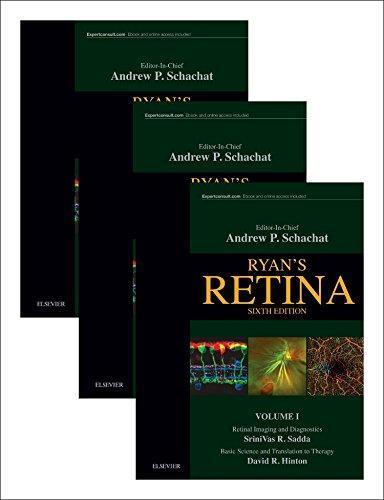
Ryan’s Retina: 3 Volume Set 6th Edition
https://ebookmass.com/product/ryans-retina-3-volume-set-6thedition/
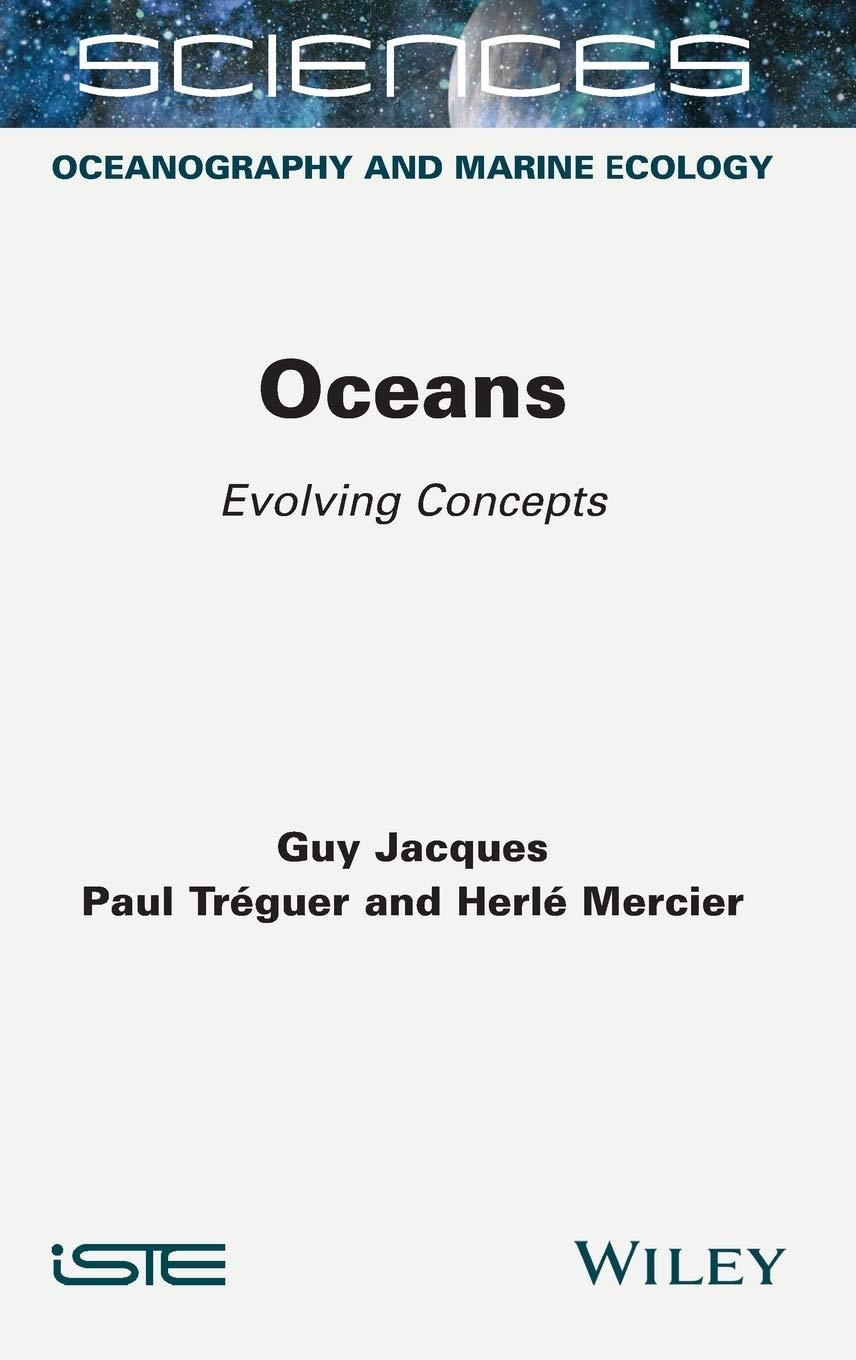
Oceans: Evolving Concepts Guy Jacques
https://ebookmass.com/product/oceans-evolving-concepts-guyjacques/
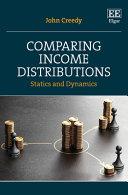
Comparing Income Distributions: Statics and Dynamics
John Creedy
https://ebookmass.com/product/comparing-income-distributionsstatics-and-dynamics-john-creedy/

A Change of Circumstance (Simon Serrailler) Susan Hill
https://ebookmass.com/product/a-change-of-circumstance-simonserrailler-susan-hill/
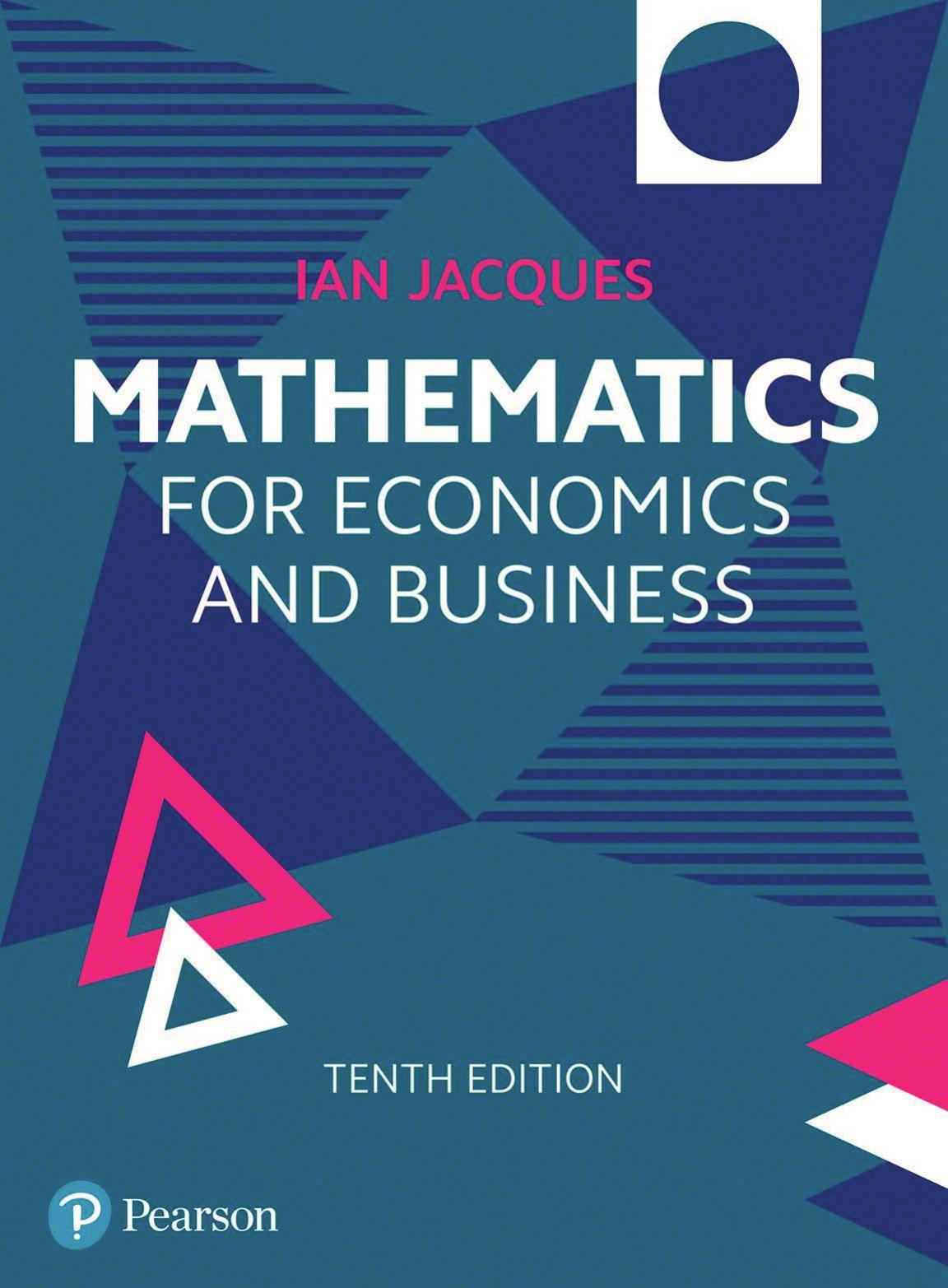
Mathematics
Ian Jacques
for
Economics and Business, 10th Edition
https://ebookmass.com/product/mathematics-for-economics-andbusiness-10th-edition-ian-jacques/
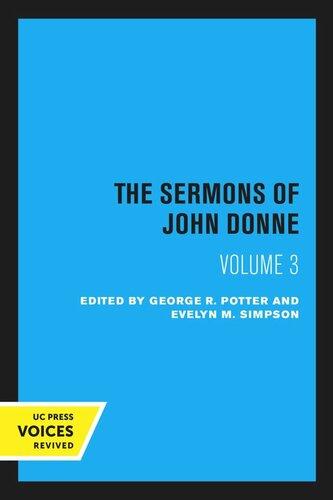
The Sermons of John Donne: Volume 3
https://ebookmass.com/product/the-sermons-of-john-donne-volume-3/

German Infantryman on the Eastern Front 1st Edition
Simon Forty
https://ebookmass.com/product/german-infantryman-on-the-easternfront-1st-edition-simon-forty/

Distributions
To Laurent Schwartz,
For his Theory of Distributions, obviously, without which this book could not have existed, but also, and above all, for his kindness and courage.
The clarity of Schwartz’s analysis classes at the École Polytechnique in 1968 made the dunce that I was there happy. Even if I arrived late, even if I had skipped a few sessions, everything was clear, lively and easy to understand. His soft voice, benevolent smile, mischievous eye — especially when, with an air of nothing, he was watching for reactions to one of his veiled jokes, “a tore, from the Greek toro, the tyre”— he made people love analysis.
When master’s students at the university demanded “a grade average for all” in 1969, most professors either complied or slunk away. Not Schwartz. When the results were posted— I was there, to make up easily for the calamitous grades I had earned at Polytechnique— he came alone, frail, in front of a fairly excited horde. He explained, in substance:
“An examination given to all, without any value, would no longer allow one to rise in society through knowledge. Removing selection on the basis of merit would leave the field open to selection by money or social origin”.
Premonitory, alas.
Analysis for PDEs Set
coordinated by Jacques Blum
First published 2022 in Great Britain and the United States by ISTE Ltd and John Wiley & Sons, Inc.
Apart from any fair dealing for the purposes of research or private study, or criticism or review, as permitted under the Copyright, Designs and Patents Act 1988, this publication may only be reproduced, stored or transmitted, in any form or by any means, with the prior permission in writing of the publishers, or in the case of reprographic reproduction in accordance with the terms and licenses issued by the CLA. Enquiries concerning reproduction outside these terms should be sent to the publishers at the undermentioned address:
ISTE Ltd
27-37 St George’s Road
John Wiley & Sons, Inc.
111 River Street London SW19 4EU Hoboken, NJ 07030 UK USA
www.iste.co.uk
www.wiley.com
© ISTE Ltd 2022
The rights of Jacques Simon to be identified as the author of this work have been asserted by him in accordance with the Copyright, Designs and Patents Act 1988.
Any opinions, findings, and conclusions or recommendations expressed in this material are those of the author(s), contributor(s) or editor(s) and do not necessarily reflect the views of ISTE Group.
Library of Congress Control Number: 2022936452
British Library Cataloguing-in-Publication Data
A CIP record for this book is available from the British Library
ISBN 978-1-78630-525-1
1.5.Spaces
2.4.Sequentialcompletenessof
viDistributions
3.4.Thecasewhere E isnotaNeumannspace................
Chapter4.ExtractionofConvergentSubsequences
4.1.Boundedsubsetsof D (Ω; E)
4.2.Convergencein
4.3.Sequentialcompletenessof
4.4.Sequentialcompactnessin
Chapter5.OperationsonDistributions
5.1.Distributionsfields..............................
5.2.Derivativesofadistribution........................
5.3.Imageunderalinearmapping.......................
5.4.Productwitharegularfunction.......................
5.5.Changeofvariables.............................
5.6.Someparticularchangesofvariables...................
5.8.Distributionswithvaluesinaproductspace...............
6.7.Propertiesoftheannihilationdomainandsupport............
6.8.Thespace
7.1.Weightingbyaregularfunction......................
7.2.Regularizingcharacteroftheweightingbyaregularfunction.....
7.3.Derivativesandsupportofdistributionsweightedbyaregularweight.
7.4.Continuityoftheweightingbyaregularfunction............
7.5.Weightingbyadistribution.........................
7.6.Comparisonofthedefinitionsofweighting................
7.7.Continuityoftheweightingbyadistribution...............
7.8.Derivativesandsupportofaweighteddistribution............
7.9.Miscellanouspropertiesofweighting...................
Chapter8.RegularizationandApplications
8.1.Localregularization.............................
8.2.Propertiesoflocalapproximations.....................
8.3.Globalregularization............................
8.4.Convergenceofglobalapproximations..................
8.5.Propertiesofglobalapproximations....................
8.6.Commutativityandassociativityofweighting..............
8.7.Uniformconvergenceofsequencesofdistributions...........
Chapter9.PotentialsandSingularFunctions
9.1.Surfaceintegraloverasphere.......................
9.3.Derivativesofadistributionassociatedwithasingularfunction....
9.4.ElementaryNewtonianpotential......................
9.5.Newtonianpotentialoforder
9.6.Localizedpotential.............................
9.7.Diracmassasderivativesofcontinuousfunctions............
9.8.Heavisidepotential.............................
Chapter10.LineIntegralofaContinuousField
Chapter11.PrimitivesofFunctions
11.1.Primitiveofafunctionfieldwithazerolineintegral..........
11.2.Tubularflowsandconcentrationtheorem................
11.3.Theorthogonalitytheoremforfunctions.................
Chapter12.PropertiesofPrimitivesofDistributions
12.5.Continuousprimitivemapping......................
12.6.Harmonicdistributions,distributionswithacontinuousLaplacian..
viiiDistributions
Chapter13.ExistenceofPrimitives
13.3.Theorthogonalitytheorem........................
13.4.Poincar´e’sgeneralizedtheorem......................
13.5.Currentofanincompressibletwodimensionalfield..........
13.6.Globalversuslocalprimitives.......................
13.7.Comparisonoftheexistenceconditionsofaprimitive.........
Chapter14.DistributionsofDistributions
14.6.Distributionsofdistributionswithvaluesin
Chapter15.SeparationofVariables
15.1.Tensorproductsoftestfunctions.....................
15.7.Permutationofvariables..........................
Chapter16.BanachSpaceValuedDistributions
16.5.DistributionsinaBanachspaceasderivativesoffunctions......
16.6.Non-representabilityofdistributionswithvaluesinaFr´echetspace.
16.7.ExtendabilityofdistributionswithvaluesinaBanachspace.....
16.8.CancellationofdistributionswithvaluesinaBanachspace......
Introduction
Objective. Thisbookisthethirdofsevenvolumesdedicatedtosolvingpartialdifferentialequationsinphysics:
Volume1: Banach,Frechet,HilbertandNeumannSpaces
Volume2: ContinuousFunctions
Volume3: Distributions
Volume4: Integration
Volume5: SobolevSpaces
Volume6: Traces
Volume7: PartialDifferentialequations
Thisthirdvolumeaimstoconstructthespaceofdistributionswithrealorvectorial valuesandtoprovidethemainpropertiesthatareusefulinstudyingpartialdifferential equations.
Intendedaudience. We 1 havelookedforsimplemethodsthatrequireaminimal levelofknowledgetomakethistoolaccessibletoaswideanaudienceaspossible —doctoralstudents,universitystudents,engineers—withoutloosinggeneralityand evengeneralizingcertainresults,whichmaybeofinteresttosomeresearchers.
Thishasledustochooseanunconventionalapproachthatprioritizessemi-norms andsequentialproperties,whetherrelatedtocompleteness,compactnessorcontinuity.
1. We? We,it’sjust“me”!There’snointentionofusingtheRoyalWe,dearreader,butthis modest(?)“we” iscommonlyusedinscientifictextswhenanauthorwishestospeakofthemselves. Itisoutofmodesty thatthewritersofPort-Royalmadethisthetrendsothattheycouldavoid,theysay,thevanityof“me” [Louis-NicolasBESCHERELLE, Dictionnaireuniverseldelalanguefranc¸aise,1845].
xDistributions
Utilityofdistributions. Themainadvantageofdistributionsisthattheyprovide derivativesofallcontinuousorintegrablefunctions,eventhosewhicharenotdifferentiable,andthusbroadenthescopeofapplicationofdifferentialcalculus.Thisis especiallyusefulforsolvingpartialdifferentialequations.
Tothisend,afamilyofobjects,thedistributions,isdefined,withthefollowing properties.
—Anycontinuousfunctionisadistribution.
—Anydistributionhaspartialderivatives,whicharedistributions.
—Foradifferentiablefunction,wefindtheconventionalderivatives.
—Anylimitofdistributionsisadistribution.
—AnyCauchysequenceofdistributionshasalimit.
Thesepropertiesmayberoughlysummarizedbysayingthatthespace D of distributionsisthe completionwithrespecttoderivation ofthespace C ofcontinuous functions.Thisconstruction,duetoLaurentSCHWARTZ,[69]and[72],iscompleted herefordistributionsonanopensubset Ω of Rd withvaluesinaNeumannspace E, i.e.asequentiallycompleteseparablesemi-normedspace.Thisincludesvaluesina BanachorFr´echetspace.
Originality. Thequestforsimplemethods 2 givinggeneralpropertiesledustoproceedasfollows.
—Directlyconsider vectorialvalues,i.e.constructing D (Ω; E) withoutanyprior studyofrealdistributions.
—Assumethat E issequentiallycomplete,i.e.aNeumannspace.
—Use semi-norms toconstructthetopologiesof E, D(Ω), D (Ω; E), etc
—Equip D (Ω; E) withthe simpletopology
—Introduce weighting togeneralizetheconvolutiontoopendomains.
—Explicitlyconstructthe primitives
Separatethevariables usinga“basic”method.
—Onlyuse integration for continuousfunctions
Letustakeacloserlookatthesepointsthatlieoffthebeatentrack.
Vectorvalues. WeconsiderdistributionswithvaluesinageneralNeumannspace E eventhoughthepartialdifferentialequationsinphysicsgenerallyhaverealvalues. Thisisusefulinevolutionequationstoseparatethetime t fromthevariableofspace x. Adistributionover t,x withrealvaluesisthenidentifiedwithadistributionover t withvaluesinaspace E ofdistributionson x,forexample,withanelementof
2. Focusandsimplicity. ThiswasoneofSteveJOBS’favouritemantras:“Simplecanbeharderthan complex:Youhavetoworkhardtogetyourthinkingcleantomakeitsimple.Butit’sworthitintheend becauseonceyougetthere,youcanmovemountains.”[BusinessWeek,1998].
D ((0,T ); E) where E = D (Ω),whichisitselfaNeumannspace.Thisidentification ismadepossiblebythefundamental kerneltheorem,p.312.
AlistofthemostusefulNeumannspacesisgivenonpage43.
Forstationaryequations,therealdistributions(thatis,thecasewhere E = R)are sufficient.Wewilldirectlyworkonthecasewhere E isaNeumannspaceinorder toavoidrepetitions,thegeneralizationoftenconsistingofreplacing R with E andthe absolutevalue || withasemi-normof E inthestatementsandproofs,whenusing appropriatemethods.
Particularfeaturesinthecaseofvectorvalues. Themaindifferencesascompared todistributionswithrealvaluesareasfollows,forageneralspace E.
—Thespace D (Ω; E) isnotreflexiveanditstopologyofpointwiseconvergenceon D(Ω) doesnotcoincidewithitsweaktopology.
—Theboundedsubsetsof D (Ω; E) arenotrelativelycompact.
—Thedistributionsover Ω arenotofafiniteorderoveritscompactparts:theycannot alwaysbeexpressedasfiniteorderderivativesofcontinuousfunctions.
—Variablesmaybeseparatedbyconstructingabijectionfrom D (Ω1 × Ω2; E) onto D (Ω1; D (Ω2; E)) (evenforarealdistribution,i.e.for E = R,thisbringsinvector values,inthiscasein D (Ω2)).
Sequentialcompleteness. Weassumethat E isaNeumannspace,i.e.thatallits Cauchyseriesconverge,sincethisisanessentialconditionforcontinuousfunctionsto bedistributions.Thatis,for C(Ω; E) ⊂D (Ω; E), see section3.4, Thecasewhere E isnotaNeumannspace,p.53.
Thispropertyissimplerthanthecompleteness,i.e.theconvergenceofallthe Cauchyfilters,andisespeciallymoregeneral:forexample,if H isaHilbertspace withinfinitedimensions, H-weak issequentiallycompletebutisnotcomplete[Vol.1, Property(4.11),p.63].
Itisalsosimplerandmoregeneralthanquasi-completeness,i.e.thecompleteness ofboundedsubsets,usedbyLaurentSCHWARTZ [72,p.2,50and52].
Semi-norms. Weusefamiliesofsemi-normsratherthanlocallyconvextopologies, whichareequivalent,inordertobeabletodefine Lp(Ω; E) inVolume4.Indeed,itis possibletoraiseasemi-normtoapower p,butnotaconvexneighborhood!
Thehandlingofsemi-normedspacesissimple,althoughitislessfamiliarthan thatoftopologicalspaces:itfollowsthehandlingofnormedspaces,themaindifferencebeingthatthereareseveralsemi-normsornormsinsteadofasinglenorm. Forexample,webringinthetopologyof D(Ω) throughthefamilyofsemi-norms
ϕ D(Ω);p =supx∈Ω, |β|≤p(x) p(x)|∂β ϕ(x)| indexedby p ∈C+(Ω),whichismuch simplerthanits(equivalent)constructionastheinductivelimitofthe DK (Ω)
Simplytopology. Weequipthespace D (Ω; E) withthefamilyofsemi-norms f D (Ω;E);ϕ,ν = f,ϕ E;ν indexedby ϕ ∈D(Ω) and ν ∈NE (setindexingthe semi-normsof E),i.e.withthetopologyofsimpleconvergenceon D(Ω),asitis well-suitedtoourstudy...andissimple.Thissimplicityisachievedwithout restrictingourselvestoa pseudo-topology asisdoneinseveraltexts.
Inaddition,thistopologyhasthesameconvergentsequencesandthesame boundedsetsasthetopologyofuniformconvergenceontheboundedsubsetsof D(Ω) usedbyLaurentSCHWARTZ.Thereasonsforourchoicesaredetailedonp.45.
Opendomainandweighting. Weconsiderdistributionsdefinedonanopensubset Ω of Rd.Asthesedonotnecessarilyhaveanextensiontoallof Rd,weintroducean operation,wecallitweighting,whichplaysarolefor Ω thatissimilartotherole playedbyconvolutionfor Rd andwhichweconstantlyuse.
Theweighteddistribution f µ ofadistribution f ,definedonanopenset Ω,bya weight µ,whichisarealdistributionon Rd withacompactsupport D,isadistribution definedontheopenset ΩD = {x ∈ Rd : x + D ⊂ Ω}.When f and µ arefunctions, itisgivenby (f µ)(x)= ˚ D f (x + y)µ(y)dy.When Ω= Rd,theconvolutionis recovereduptoasymmetryon µ,andallitspropertiesarerecovereduptoapossible sign.
Primitives. Weshowthatafieldofdistributions q =(q1,...,qd) hasaprimitive f , thatis ∇f = q,ifandonlyifitsatisfies q,ψ =0E forallthetestfields ψ =(ψ1,...,ψd) suchthat ∇ . ψ =0.Itisthe orthogonalitytheorem.Weexplicitly determinealltheprimitivesandamongthesedetermineonewhichdepends continuouslyon q
Wealsodemonstratethatwhen Ω issimplyconnecteditisnecessaryandsufficient that ∂iqj = ∂j qi forall i and j.Itisthe Poincar´e’sgeneralizedtheorem.
Separationofvariables. Weshowthattheseparationofvariablesisbijectivefrom D (Ω1 × Ω2; E) onto D (Ω1; D (Ω2; E)) bymeansofinequalities.Thesearecertainlylaborioustoestablish,buttheyavoidthedifficulttopologicalpropertiesusedby LaurentSCHWARTZ inhisdiabolicalproofofthis kerneltheorem
Theadvantageofthismethodislaidoutinthecommentary Originality... ,p.317.
Integration. Theintegrationofcontinuousfunctionsisessentialtoidentifythemwith distributionsthroughtheequality f,ϕ = fϕ,foralltestfunctions ϕ.Sincethe
theoryofintegrationwasnotdevelopedforvaluesinaNeumannspace,inVolume2 weestablishedresultsrelativetouniformlycontinuousfunctionsthatmeetourrequirements.Weremindthembeforeusingtheminthisvolume.
ThegeneraltheoryofintegrationwithvaluesinaNeumannspacewillbedone inalatervolumeinthecontextof integrabledistributions,whichplaytheroleofthe usual classesofalmostequalintegrablefunctions.Indeed,ithasseemedsimplerto thusconstructgeneralintegration.
Prerequisite. Theproofsinthemainbodyofthetextonlyusethedefinitionsand resultsalreadyestablishedinVolumes1and2,recalledeitherintheAppendixorin thetext,withreferencestotheirproofs.
Thisbookhasbeenwrittensuchthatitcanbereadinanout-of-orderfashionby anon-specialist:theproofsaredetailedandincludeargumentsthatmaybetrivial foranexpertandthenumbersofthetheoremsbeingusedaresystematicallyrecalled. Thesedetailsareevenmorenecessary 3 sincethemajorityoftheresultsaregeneralizations,thatarenew,tofunctionsanddistributionswithvaluesinaNeumannspace ofpropertiesthatareclassicforvaluesinaBanachspace.
Irequestthereadertobelenientwithhowheavythismaymakethetext.
Comments. Unlikethemainbodyofthetext,thecomments,appearinginsmallerfont,mayreferto externalresultsorthosenotyetestablished.Theappendix‘Reminders’isalsowritteninsmallerfontasit isassumedthatthecontentisfamiliar.
Historicaloverview. Whereverpossible,theoriginoftheconceptsandresultsis specifiedinfootnotes 4 .
3. Necessarydetails. AsLaurentSCHWARTZ explainedinthepreambletooneofhisarticles[71,p.88]: “Althoughmanyproofsarerelativelyeasy,wefinditusefultowritethem inextenso,becausewhenever topologicalvectorspacescomeintoplaytherearesomany‘traps’thatgreatrigorisneeded”. GiventhatthegreatandrigorousAugustinCAUCHY hashimselfarrivedatanerroneousresult,wehave nottreatedanydetailtoolightly.Letusrecallthat,in1821,inhisremarkable Coursd’Analysedel’ ´ Ecole RoyalePolytechnique,hedeclaredthathehad‘easily’[18,p.46]proventhatifarealfunctionwithtwo realvariablesiscontinuouswithrespecttoboththevariables,itiscontinuouswithrespecttotheircouple. Itwasnottill1870thatCarlJohannesTHOMAE [89,p.15]demonstratedthatthiswasinexact.
4. Historicaloverview.Objective. Thisisfirstofalltohonourthemathematicianswhoseworkhas madethisbookpossibleandinspireit.Althoughsomemaybemissing,eitherduetolimitedspaceor knowledge.Theotherobjectiveistoshowthattheworldofmathematicsisanancienthumanconstruction, nota“revealedtruth”,andthatbehindeachtheoremthereareoneormorehumans,ourcontemporariesor distantancestorswho—includingtheGreeks—reasonedjustaswellasus,withoutinternet,computers orevenprintingandpaper.
Theforgotten. TheFrenchareprobablyover-representedhere,astheyareinallfrenchlibrariesand teachingand,often,infrenchhearts.AmongtheFrench,Iamover-represented,becausethisbookisthe resultofthirtyyearsofworkIhavecarriedouttosimplifyandgeneralizedistributionswithvectorialvalues.
xivDistributions
Navigatingthisbook.
—The tableofcontents,atthebeginningofthisbook,liststhetopicsdiscussed.
—The index,p.371,providesanotherthematicaccess.
—The tableofnotations,p.xv,specifiesthemeaningofthesymbolsused.
—Thehypothesesareallstatedwithinthetheoremsthemselves.
—Thenumberingiscommontoallthestatements,sothattheycanbeeasilyfoundin numericalorder(forinstance,Theorem2.2isfoundbetweenstatements2.1and2.3, whicharedefinitions).
Acknowledgements. IamparticularlygratefultoEnriqueFERN ´ ANDEZ-CARA who hasproofreadcountlessversionsofthistext,indefatigable,andwhohasgivenme variousfriendlysuggestionsforequallycountlessimprovementsineachversion.
FulbertMIGNOT suggested(amongotherthings)thateachchaptershouldbeprecededbyabriefintroduction.Thiswasveryhelpful:inordertorevealtheguiding principle,Ihadtohighlightitandre-writeseveralsections.
ThemeticulousandknowledgeablereadingscarriedoutbyOlivierBESSON,DidierBRESCH andPierreDREYFUSS contributedsubstantialimprovementstothetext.
J´erˆomeLEMOINE,mydisciple—astigmataandacrosshe’llbearforlife!—, hadthetaskofproofreadingthedemonstrations:heis,thus,entirelyresponsiblefor anyerrorstheremaybe...except,perhaps,thoseImayhaveaddedsince.
JacquesBLUM wasabletoconvincemethatitwastimetopublishthis.Indeed.
Thankyou,myfriends,forallyourhelpandwarmsupport.
JacquesSIMON Chapdes-Beaufort,March2021
LaurentSCHWARTZ,myprimarysourceofinspirationandadmiration,isalsoperhapsover-represented, since,histreatiseshavingnohistoricalnotesduetohisgreatmodesty,Ihaveattributedtohimthetotality oftheircontents.Ontheotherhand,theRussiansandEasternEuropeansareprobablyparticularlyunderrepresented,duetothelanguagebarrier,aggravatedbythemutualignoranceoftheWestandEastduring theColdWarperiod.
Novelties. Attheriskofsoundingimmodest(well, nobodyisperfect)Ihavemarkedoutalargenumberof resultsthatIbelievearenew,bothtoarousethereader’svigilance—it’snotimpossiblethatthisbookmay containsomecarelessmistake—andtodrawtheirattentiontothenewtoolsavailabletothem. Appealtothereader. AnumberofimportantresultslackhistoricalnotesbecauseIamnotfamiliarwith theirorigin.Ibegthereader’sindulgencefortheselacunaeand,aboveall,theinjusticesthatmayresult. AndIcallupontheeruditeamongyoutoflaganyimprovementstomeforfutureeditions.
SPACESOF DISTRIBUTION
D(Ω) spaceoftestfunctions(infinitelydifferentiablewithcompactsupport)...21
DK (Ω) id. withsupportinthecompactset K ⊂ Ω (anothernotationfor C∞ K (Ω))..24
D(Ω; Rd) spaceoftestfields..................271
D (Ω) spaceofrealdistributions...............42
D (Ω; E) spaceofdistributionswithvaluesin E ............42
DK (Ω; E) id. withsupportintheclosedset K ⊂ Ω ...........137
D (Ω; Ed) spaceofdistributionfields...............82
D∇(Ω; Ed) spaceofgradients..................253
D (Ω)-weak D (Ω) equippedwithitsweaktopology...........80
D (Ω; E-weak) spaceofdistributionswithvaluesin E-weak ..........78
D (Ω; E)-unif D (Ω; E) withtopologyofuniformconvergenceonboundedsubsetsof D(Ω)..46
D (Ω1; D (Ω2; E))) spaceofdistributionsofdistributions...........285
SETOFDISTRIBUTIONS
D +(Ω) setofrealpositivedistributions..............111
SPACEOFFUNCTIONS
B(Ω; E) spaceofuniformlycontinuousfunctionswithboundedsupport.....14
C(Ω; E) spaceofcontinuousfunctions..............12
Cb(Ω; E) id. bounded...................12
CK (Ω; E) id. withsupportinthecompactset K ⊂ Ω ..........18
C+(Ω) setofrealpositivecontinuousfunctions...........19
Cm(Ω; E) spaceof m timescontinuouslydifferentiablefunctions;caseof m = ∞ .12,13
Cm b (Ω; E) id. withboundedderivatives,caseof m = ∞ .........12,13
Cm K (Ω; E) id. withsupportinthecompactset K ⊂ Ω ..........18
C(Ω; E) spaceofuniformlycontinuousfunctions...........342
Cb(Ω; E) id. bounded...................13
CD(Ω; E) id. withsupportinthecompactset D ⊂ Rd ..........18
Cm b (Ω; E) space Cm withuniformlycontinuousandboundedderivatives.....13
K(Ω) spaceofrealcontinuousfunctionswithcompactsupport.......57
K∞(Ω) id. infinitelydifferentiable...............24
K(Ω; E) spaceofcontinuousfunctionswithcompactsupport........186
K∞(Ω; E) spaceofinfinitelydifferentiablefunctionswithcompactsupport....178
SETOFFUNCTIONS
Cm(Ω;Λ) setoffunctionsof Cm(Ω; Rd) withvaluesintheset Λ .......100
C1([a,b];Ω) setof“differentiable”functionson [a,b],withvaluesin Ω ......222
SPACEOFMEASURES
M(Ω) spaceofrealmeasures................58
M(Ω; E) spaceofmeasureswithvaluesin E .............58
OPERATIONSONADISTRIBUTION (ORAFUNCTION) f f,ϕ valueofadistributiononatestfunction ϕ ...........42 f extensionby 0E ..................139 f imageunderthesymmetry x →−x ofthevariable........184
˘ f imageunderpermutationofvariables;caseofadistributionofdistributions109,318 f imageundergroupingofvariables.............317 f imageunderseparationofvariables.............309
f |ω restriction....................117
τxf translationby x ∈ Rd ................107
Rnf globalregularization.................176 Lf compositionwithalinearmapping L over E ..........91 f ◦ T compositionwitharegularchangeofvariable T .........101 f µ weightingbyaweight µ;caseofaregularweight;caseoffunctions153,142,144
f ρn localregularization.................170 f µ convolutionwith µ .................155 f ⊗ g tensorproduct(offunctions)...............297 nihil f annihilationdomain.................130 supp f support;caseofafunction..............131,17
DERIVATIVESOFADISTRIBUTION (OROFAFUNCTION) f
f or df/dx derivativeofafunctionofarealvariable............9
∂if partialderivative: ∂if = ∂f/∂xi;caseofafunction.......85,10 ∂β f derivativeoforder β:
f ;caseofafunction....85,11 β positivemulti-integer: β =(β1,...,βd), βi ≥ 0 ........10
|β| derivationorder: |β| = |β1| + ... |βd| ............10
∂0f derivativeoforder 0: ∂0f = f ..............10
∇f gradient: ∇f =(∂1f,...,∂df );caseofafunction........85,9 ∆f Laplacian: ∆f =
2 1
+ +
2
............99 q field: q =(q1,...,qd) ................81
∇ . q divergence: ∇ . q = ∂1q1 + ...∂dqd ............239
∇ 1q primitivedependingcontinuouslyon q ............257
INTEGRALSOFFUNCTIONSANDPATHS
ω f Cauchyintegral..................15
Sn ω f approximateintegral.................15
ω f completedintegral.................54
Sr f ds surfaceintegraloverasphere..............191
Γ q . d lineintegralofavectorfieldalongapath...........222
Γ path......................221 [Γ] imageofapath: [Γ]= {Γ(t): ti ≤ t ≤ te} ..........221
reversepath...................226
concatenationofpaths................228
H homotopy....................231 [H] imageofahomotopy.................231
SEPARATEDSEMI-NORMEDSPACES
E separatedsemi-normedspace...............1 E;ν semi-normof E ofindex ν ................1 NE setindexingthesemi-normsof E ..............1
equalityoffamiliesofsemi-norms..............4
topologicalequality..................5
⊂ → topologicalinclusion..................5
E-weak space E equippedwithpointwiseconvergenceon E ........77 E dualof E ....................76
E sequentialcompletionof E ...............54
Ed Euclideanproduct E × × E ..............8
E1 ×···× Ed productofspaces..................114
SUBSETSANDMAPPINGSOFSEMI-NORMEDSPACES
˚ U interiorofasubset U ofasemi-normedspace..........351 U closureof U
boundaryof U
Lin(E; F ) setoflinearmappings................285
L(E; F ) spaceofcontinuouslinearmappings............356
Ld(E1×...×Ed; F ) spaceofcontinuousmultilinearmappings.........360
POINTSANDSUBSETSOF Rd
Rd Euclideanspace: Rd = {x =(x1,...,xd): ∀i,xi ∈ R} ......354
|x| Euclideannorm: |
x . y Euclideanscalarproduct:
ei i-thbasisvectorin Rd ................10
Ω domainofdefinitionoffunctionsorofdistributions.........8
ΩD domainoftheweighteddistribution: ΩD = {x : x + D ⊂ Ω};figure.142,143
Ω1/n Ω minusaneighborhoodofitsboundary: Ω1/n = {x : B(x, 1/n) ⊂ Ω} ..171
Ω(a) 1/n connectedcomponentof Ω1/n containing a;figures.....235,266,268
Ωn r potato-shapedset: Ωn r = {x : |x| <n,B(x,r) ⊂ Ω} .......33
κn crown-shapedset: κn =Ωn+2 1/(n+2) \ Ωn 1/n ..........33
ω subsetof Rd ....................8
|ω| measureoftheopenset ω ...............364
B(x,r) closedball B(x,r)= {y ∈ Rd : |y x|≤ r} .........353
˚ B(x,r) openball ˚ B(x,r)= {y ∈ Rd : |y x| <r} .........353
Ca,b opencrown Ca,b = {x ∈ Rd : a< |x| <b} ..........364
υd measureoftheunitball: υd = | ˚ B(0, 1)| ...........365
∆s,n closedcubeofedgelength 2 n centeredon 2 ns ........15 compactinclusionin Rd ................176
OTHERSETS 1
N setofnaturalnumbers: N = {0, 1, 2,...}
N∗ setofpositivenaturalnumbers: N∗ = {1, 2,...}
Z setofintegers: Z = {..., 2, 1, 0, 1,
Q setofrationalnumbers................349 R spaceofrealnumbers.................350
integerinterval: m,n
∞ extendedintegerinterval:
(a,b) openinterval: (a,b)= {x ∈ R : a<x<b}
[a,b] closedinterval: [a,b]= {
ANDALSO
∅ emptyset
⊂ algebraicinclusion
setdifference:
SPECIFICFUNCTIONSANDDISTRIBUTIONS
det determinant...................362
δx Diracmass....................59
α,αn partitionofunity;localizingfunction...........34,175
ρn regularizingfunction.................169
ϕ or φ testfunction...................21
ψ divergence-freetestfield................271
ξ elementarypotential: ∆ξ = δ0 .............197
γ localelementarypotential: γ = θξ .............208
η correctorterm: η =2∇ξ . ∇θ + ξ∆θ ............208 e exponentialnumber..............[Vol.1,p.323] log logarithm.................[Vol.1,p.321]
TYPOGRAPHY
endofstatement endofprooforcomment
FIGURES
Pavingofanopenset ω bythecubes ∆s,n (todefinethemeasureandintegral)......15
Coveringof Ω bycrown-shapedsets κn andpotato-shapedsets Ωn 1/n ........34
Domainofdefinition ΩD oftheweighteddistribution f µ ...........142
Domain ΩD goinguptoapartoftheboundary...............143
GraphofthefunctionsinDiracmassdecomposition.............212
Intermediateclosedpaths Γn betweentwohomotopicclosedpaths.........233
Divergence-freetubularflow Ψ ...................240
Connectedcomponent Ω(a) 1/n of Ω1/n containing a ..............266
Connectedopenset Ω forwhichno Ω1/n isconnected.............268
Field q withlocalprimitive θ butnoglobalprimitive.............280
Decompositionofa“projection”onaclosedsubset..............344
1. Notationofnaturalnumbers. Thenotationof N and N∗ followstheISO80000-2standard,seep.349.
Semi-NormedSpaces andFunctionSpaces
Inthischapter,weprovidedefinitionsforthefollowingessentialnotions.
—Semi-normedspacesand,inparticular,Neumann,Fr´echetandBanachspaces(§1.1).
—Topologicalequalityandinclusionofsemi-normedspaces(§1.2).
—Continuousmappings(§1.3)anddifferentiablefunctions(§1.4).
—Spacesofcontinuouslydifferentiablefunctionsandtheirsemi-norms(§1.5).
—TheintegralofauniformlycontinuousfunctionwithvaluesinaNeumannspace(§1.6).
WewillmakeextensiveuseoftheirpropertiesestablishedinVolumes1and2,andrefer,astomakethis bookself-contained,totheirprecisestatementsinthecourseofthetextorintheAppendixwithreferences totheirproofs.
1.1.Semi-normedspaces
Letusdefineseparatedsemi-normedspaces 1 (thedefinitionsofvectorspacesand ofsemi-normsarerecalledintheAppendix,§A.2).
Definition1.1.– A semi-normedspace isavectorspace E endowedwithafamilyof semi-norms { E;ν : ν ∈NE }
Anysuchspaceissaidtobe separated (or Hausdorff)if u =0E istheonly elementsuchthat u E;ν =0 forall ν ∈NE .
1. Historyofthenotionofsemi-normedspace. JohnvonNEUMANN introducedsemi-normedspaces in1935[56](withanunnecessarycountabilitycondition).Healsoshowed[56,Theorem26,p.19]that theycoincidewiththelocallyconvextopologicalvectorspacesthatAndreyKOLMOGOROV previously introducedin1934[46,p.29].
HistoryofthenotionofHausdorffspace. FelixHAUSDORFF hadincludedtheseparationconditioninits originaldefinitionofatopologicalspacein1914[40].
Distributions, First Edition. Jacques Simon
© ISTE Ltd 2022. Published by ISTE Ltd and John Wiley & Sons, Inc.
2Distributions
A normedspace isavectorspace E endowedwithanorm E
Caution. Definition1.1ofaseparatedsemi-normedspaceisgeneralbutnotuniversal.ForLaurent SCHWARTZ [73,p.240],asemi-normedspaceisaspaceendowedwitha filtering familyofsemi-norms (Definition1.8).Thisdefinitionisequivalent,sinceeveryfamilyisequivalenttoafilteringfamily[Vol.1, Theorem3.15].
ForNicolasBOURBAKI [10,editionspublishedafter1981,Chap.III,p.III.1]andRobertEDWARDS [30,p.80],asemi-normedspaceisaspaceendowedwitha single semi-norm,whichdrasticallychangesits meaning.
Letusdefineboundedsubsets 2 ofaseparatedsemi-normedspace.
Definition1.2.– Let U beasubsetofaseparatedsemi-normedspace E,whosefamily ofsemi-normsisdenotedby { E;ν : ν ∈NE }.Wesaythat U is bounded if,for every ν ∈NE , sup u∈U u E;ν < ∞
LetusdefineconvergentandCauchysequences 3 inasemi-normedspace.
Definition1.3.– Let (un)n∈N beasequenceinaseparatedsemi-normedspace E, whosefamilyofsemi-normsisdenotedby { E;ν : ν ∈NE }.
(a) Wesaythat (un)n∈N convergestoalimit u ∈ E,andwedenote un → u,if,for every ν ∈NE , un u E;ν → 0 when n →∞.
(b) Wesaythat (un)n∈N isa Cauchysequence if,forevery ν ∈NE , supm≥n um un E;ν → 0 when n →∞
CAUTION. Wedenote N def = {0, 1, 2,...} and N∗ def = {1, 2,...},conformingtotheISO80000-2standardformathematicalandphysicsnotation(editedin2009).
Anypossibleconfusionwillbeofnoconsequence,apartfromsurprisingthereaderusedtotheopposite notationwhenseeingaterm u0 ofaseriesindexedby N,ortheinverse 1/n ofanumber n in N∗ .
2. Historyofthenotionofboundedset. Boundedsetsinasemi-normedspacewereintroducedin1935 byJohnvonNEUMANN [56].AndreyKOLMOGOROV hadintroducedthemin1934[46]fortopological vectorspaces.
3. Historyofthenotionofconvergentsequence. BaronAugustinCAUCHY gaveDefinition1.3for convergencein R,in1821[18,p.19].NielsABEL contributedtotheemergenceofthisnotion. HistoryofthenotionofCauchysequence. AugustinCAUCHY introducedtheconvergencecriterionof Definition1.3forrealseries,in1821[18,p.115-116],admittingit(i.e.byimplicitlyconsidering R asthe completionof Q).BernardBOLZANO previouslystatedthiscriterionin1817in[6],tryingunsuccessfully tojustifyitduetothelackofacoherentdefinitionfor R
Semi-NormedSpacesandFunctionSpaces3
Letusdefineseveraltypesofsequentiallycompletespaces.
Definition1.4.– Aseparatedsemi-normedspaceis sequentiallycomplete ifallits Cauchysequencesconverge.
A Neumannspace isasequentiallycompleteseparatedsemi-normedspace.
A Fr´echetspace isasequentiallycompletemetrizablesemi-normedspace.
A Banachspace isasequentiallycompletenormedspace.
Neumannspaces. WenamedthesespacesinVolume1inhomagetoJohn VON NEUMANN,whointroducedsequentiallycompleteseparatedsemi-normedspacesin1935[56].Thus,readersshouldrecallthe definitionbeforeusingitelsewhere.Examplesofsuchspacesaregiveninthecommentary Examplesof Neumannspaces,p.43.
Completenessandsequentialcompleteness. Asemi-normedspaceis complete ifeveryCauchyfilterconverges[SCHWARTZ,73,Chap.XVIII,§8,Definition1,p.251].Weshallnotusethisnotion sincesequentialcompletenessismuchsimplerandmoregeneral(completeimpliessequentiallycomplete [SCHWARTZ,73,p.251])andespeciallysincecertainusefulspacesaresequentiallycompletebutnot complete.Forexample,itisthecaseofanyreflexiveHilbertorBanachspaceofinfinitedimensionendowed withitsweaktopology[Vol.1,Property(4.11),p.63].
CompletenessandMetrizability. Recallthat,forametrizablespace, completeness isequivalentto sequentialcompleteness [SCHWARTZ,73,TheoremXVIII,8;1,p.251].Thisiswhysomeauthorsspeakof completenessforBanachorFr´echetspaces,whileinrealitytheyonlyusesequentialcompleteness.
Letusgiveadefinitionofmetrizability.
Definition1.5.– Asemi-normedspaceis metrizable ifitisseparatedandifitsfamily ofsemi-normsiscountableorisequivalenttoacountablefamilyofsemi-norms.
Definitionsoftheequivalenceoffamiliesofsemi-normsandoftheircountability arerecalledonpages4and350(Definitions1.6andA.1).
Justificationforthename“metrizable”. Wereferheretoa metrizable spacesinceeverycountablefamily or,whatleadstothesamething,anysequence ( k)k∈N ofsemi-normscanbeassociatedwitha distance, or metric, d whichgeneratesthesametopology,forinstance d(u,v)= k∈N 2 k u v k 1+ u v k
Definition1.5is,infact,thatofa separatedcountablysemi-normablespace.Weshallabuseterminology andspeakof metrizable spacessincethisequivalentnotionismorefamiliar.Tobeprecise,a metrizable spaceisaspacethatis“topologicallyequaltoametricspace”.
4Distributions
Superiorityofasequenceofsemi-normsoveradistance. Thesemi-normsofametrizablespace E allow ustocharacterizeitsboundedsubsets U by(Definition1.2)
supu∈U u E;k < ∞,forall k ∈ N.
Onthecontrary, if E isnotnormable andif d isadistancethatgeneratesitstopology,itsboundedsubsets arenotcharacterizedby
sup u∈U
d(u, 0E ) < ∞
Whatisworse,isthatno“ball” {u ∈ E : d(u,z) <r},for r> 0,isbounded.Indeed,theexistenceofa non-emptyboundedopensubsetisequivalenttonormability,dueto Kolmogorov’sTheorem 4
1.2.Comparisonofsemi-normedspaces
First,letuscomparefamiliesofsemi-normsonthesamevectorspace.
Definition1.6.– Let { 1;ν : ν ∈N1} and { 2;µ : µ ∈N2} betwofamiliesof semi-normsonthesamevectorspace E.
Thefirstfamily dominates thesecondif,forevery µ ∈N2,thereexistafinite subset N1 of N1 and c1 ∈ R suchthatforevery u ∈ E, u 2;µ ≤ c1 sup ν∈N1 u 1;ν .
Bothfamiliesare equivalent ifeachonedominatestheother.Wealsosaythatthey generatethesametopology.
Terminology. The topology of E isthefamilyofitsopensubsets.Wecansaythattwofamiliesofseminorms generatethesametopology insteadofsayingthatthey areequivalent,sincetheequivalenceofthe familiesofsemi-normsimpliestheequalityofthefamiliesofopensubsets[Vol.1,Theorem3.4],and reciprocally[Vol.1,Theorem7.14(a)and8.2(a),with L = T = Identity].
Letusseehowwecancomparetwosemi-normedspaces(thedefinitionofavector subspaceisrecalledintheAppendix,§A.2).
Definition1.7.– Let E and F betwosemi-normedspaces,whosefamiliesofseminormsaredenotedby { E;ν : ν ∈NE } and { F ;µ : µ ∈NF }.
(a) Wedenote E ≡ ↔ F if E = F andiftheiradditions,multiplicationsandfamiliesof semi-normscoincide.Thatistosay,iftheyhavethesamevectorspacestructureand thesamesemi-norms.
4. HistoryofKolmogorov’sTheorem. AndreyKOLMOGOROV showedin1934[46,p.33]thata topologicalvectorspaceisnormableifandonlyifthereexistsaboundedconvexneighborhoodofthe origin,whichisequivalentheretotheexistenceofaboundedopenset.
Semi-NormedSpacesandFunctionSpaces5
(b) Wesaythat E is topologicallyequal to F andwedenote E = ↔ F if E = F ,if theiradditionsandmultiplicationscoincideandiftheirfamiliesofsemi-normsare equivalent.
(c) Wesaythat E is topologicallyincluded in F andwedenote E ⊂ → F if E isa vector subspace of F andifthefamilyofsemi-normsof E dominatesthefamilyofrestrictions to E ofthesemi-normsof F
Thatistosayif,foreverysemi-norm µ ∈NF ,thereexistafinitesubset N of NE and c ∈ R suchthat,foreverysemi-norm u ∈ E, u F ;µ ≤ c sup ν∈N u E;ν .
(d) Wesaythat E isa topologicalsubspace of F ifitisavectorsubspaceof F and ifitisendowedwiththerestrictionsto E ofthesemi-normsof F or,moregenerally, withafamilyequivalenttothefamilyoftheserestrictions.
Caution. Supposethat E = F andthat,forevery µ ∈NF ,thereexists ν ∈NE suchthat,forevery u ∈ E, u F ;µ = u E;ν
Thisequality doesnotimplytopologicalequality E = ↔ F :itonlyimplies E ⊂ → F .Indeed,itdoesnot ensuretheexistence,forevery ν ∈NE ,ofa µ satisfyingthisequalityorofafinitefamilyof µ suchthat u E;ν ≤ c supµ∈M u F ;µ,whichisnecessaryfortheconverseinclusion F ⊂ → E
Suchanequalityofsemi-normsoccursforexampleinstep3,p.28,oftheproofofTheorem2.12, wherewethusproveaconverseinequalitytogettopologicalequality.
Letusfinallydefinefilteringfamiliesofsemi-norms.
Definition1.8.– Afamily { ν : ν ∈N} ofsemi-normsonavectorspace E is filtering if,foreveryfinitesubset N of N ,thereexist µ ∈N suchthat,forevery u ∈ E, sup ν∈N u ν ≤ u µ
Utilityoffilteringfamilies. Theuseoffilteringfamiliessimplifiessomestatements,bysubstitutinga singlesemi-normtotheupperenvelopeofafinitenumberofsemi-norms.Thisisforexamplethecase withthecharacterizationofcontinuouslinearmappingsfromTheorem1.12whereweconsiderbothcases. Definition1.9ofcontinuousmappingscouldsimilarlybesimplifiedwithafilteringfamily.
Anyfamilyofsemi-normsisequivalenttoafilteringfamily[Vol.2,Theorem3.15],butthisoneisnot necessarilypleasanttouse.
Spacesendowedwithfilteringfamilies. The“natural”familyofsomespacesisfiltering.Forexample, D(Ω) isendowed(Definition2.5)withthefamily,whichisfiltering(Theorem2.7),ofthesemi-norms, indexedby p ∈C+(Ω), ϕ D(Ω);p =sup x∈Ω sup |β|≤p(x) p(x)|∂β ϕ(x)|
Asinglenormalsoconstitutes,onitsown,afilteringfamilyofsemi-norms.
6Distributions
Utilityofnon-filteringfamilies. The“natural”familyofsomespacesisnotfiltering.Forexample, D (Ω) isendowed(Definition3.1)withthenon-filteringfamilyofthesemi-norms,indexedby ϕ ∈D(Ω), f D (Ω);ϕ = | f,ϕ | Iftheaimwastoconsiderfilteringfamiliesonly,then D (Ω) shouldbeendowedwiththesemi-norms |||f |||D (Ω);N =sup ϕ∈N | f,ϕ |
indexedbythefinitesubsets N of D(Ω).Themaximumoverfinitesubsetswouldofcoursedisappearfrom Definition1.9ofcontinuousfunctionsbutitwouldreappearhere.
1.3.Continuousmappings
Wenowdefinevariousnotionsofcontinuity 5 ofamappingfromasemi-normed spaceintoanother.
Definition1.9.– Let T beamappingfromasubset X ofaseparatedsemi-normed space E intoanotherseparatedsemi-normedspace F ,andlet { E;ν : ν ∈NE } and { F ;µ : µ ∈NF } bethefamiliesofsemi-normsof E and F
(a) Wesaythat T is continuousatthepoint u of X if,forevery ν ∈NE and > 0, thereexistafinitesubset M of NF and η> 0 suchthat: v ∈ X, sup µ∈M v u
Wesaythat T is continuous ifitissoateverypointof X
(b) Wesaythat T is uniformlycontinuous if,forevery ν ∈NE and > 0,thereexist afinitesubset M of NF and η> 0 suchthat: u ∈ X,v ∈ X, sup µ∈M v u F ;µ ≤ η
(v) T (u) E;ν ≤ .
(c) Wesaythat T is sequentiallycontinuousatthepoint u of X if,foreverysequence (un)n∈N of X: un → u in E ⇒ T (un) → T (u) in F
Wesaythat T is sequentiallycontinuous ifitissoateverypointof X
5. Historyofthenotionsofcontinuity. AugustinCAUCHY definedsequentialcontinuityforarealfunction onalinesegmentin1821,in[18].BernardPlacidusJohannNepomukBOLZANO alsocontributedtothe emergenceofthisnotion. EduardHEINE definedtheuniformcontinuityofafunctiondefinedonapartof Rd in1870,in[42].It hadalreadybeenusedimplicitlybyAugustinCAUCHY in1823todefinetheintegralofarealfunction[19, p.122-126],andthenexplicitlybyPeterDIRICHLET
Semi-NormedSpacesandFunctionSpaces7
(d) Wesaythat T is bounded ifitsimage T (X)= {T (u): u ∈ X} isboundedin F Thatistosayif,forevery µ ∈NF ,
Recallthatcontinuityalwaysimpliessequentialcontinuity[Vol.1,Theorem7.2] 6 .
Theorem1.10.– Anycontinuousmappingfromasubsetofaseparatedsemi-normed spaceintoaseparatedsemi-normedspaceissequentiallycontinuous.
Theconverseistrueiftheinitialspaceismetrizable[Vol.1,Theorem9.1].
Theorem1.11.– Amappingfromasubsetofametrizableseparatedsemi-normed spaceintoaseparatedsemi-normedspaceiscontinuousifandonlyifitissequentially continuous.
Forlinearmappings,Definition1.9gives[Vol.1,Theorem7.14]:
Theorem1.12.– Let L bealinearmappingfromaseparatedsemi-normedspace E intoaseparatedsemi-normedspace F ,andlet { E;ν : ν ∈NE } and { F ;µ : µ ∈NF } bethefamiliesofsemi-normsof E and F .Then:
(a) L iscontinuousifandonlyif,forevery µ ∈NF ,thereexistafinitesubset N of NE and c ≥ 0 suchthat:forevery u ∈ E,
Lu F ;µ ≤ c sup ν∈N u E;ν .
Thisisalsoequivalenttothestatement: L isuniformlycontinuous.
(b) Ifthefamilyofsemi-normsof E isfiltering,then L iscontinuousifandonlyif,for every µ ∈NF ,thereexist ν ∈NE and c ≥ 0 suchthat:forevery u ∈ E,
Lu F ;µ ≤ c u E;ν
Observethattopologicalinclusionisequivalenttothecontinuityofidentity.
6. Numberingofstatements. Thenumberingiscommontoallthestatements— Definition1.1,..., Definition1.9, Theorem1.10, Theorem1.11,etc.—,tomakeiteasiertofindagivenresultbyfollowing theorderofthenumbers.ItisnotworthwhilethereforetolookforTheorems1.1to1.9,asthesenumbers havebeenassignedtodefinitions.ThereisalsononeedtolookforDefinitions1.10,1.11,etc.
8Distributions
Theorem1.13.– Thetopologicalinclusion E ⊂ → F ofaseparatedsemi-normedspace intoanotherisequivalenttothecontinuityoftheidentitymappingfrom E into F
Proof. Definition1.7(c)oftopologicalinclusioncoincideswiththecharacterization ofcontinuityfromTheorem1.12(a)appliedtotheidentity,i.e.for Lu = u.
Forsemi-norms,Definition1.9gives[Vol.1,Theorem7.11]:
Theorem1.14.– Asemi-norm p onaseparatedsemi-normedspace E withafilteringfamily { E;ν : ν ∈NE } ofsemi-normsiscontinuousifandonlyifthereexist ν ∈NE and c ≥ 0 suchthat:forevery u ∈ E, p(u) ≤ c u E;ν .
Additionandmultiplicationbyarealnumber t formappingswithvaluesina vectorspacearedefinedby
1.4.Differentiablefunctions
Wereservetheterm function foramappingdefinedonasubsetof Rd,whichin generalisdenotedby Ω.Throughoutthebook,thedimension d isaninteger ≥ 1
Recallthatafunctioniscontinuousifandonlyifitissequentiallycontinuous (Theorem1.11,since Rd isnormed).
Gradientbeingdefinedin Ed def = {(u1,...,ud): ui ∈ E, ∀i},recallthatthis productspaceisendowedwiththesemi-norms,indexedby ν ∈NE ,
whichmakesitaseparatedsemi-normedspace[Vol.1,Theorem6.11].
Wedenoteby |z| def =(z2 1 + ··· + z2 d )1/2 theEuclideannormof z ∈ Rd and,for u ∈ Ed , z . u def = z1u1 + ··· + zdud.
Observethat
Semi-NormedSpacesandFunctionSpaces9
Indeed,fromtheCauchy-Schwarzinequalityin Rd,see(A.1),p.354,
. u E;ν ≤
Letusdefinevariouslevelsofdifferentiabilityforafunctionwithvaluesina separatedsemi-normedspace.
Definition1.15.– Let f beafunctionfromanopensubset Ω of Rd intoaseparated semi-normedspace E,whosefamilyofsemi-normsisdenotedby { E;ν : ν ∈NE }.
Wesaythat f is differentiableatthepoint x of Ω,ifthereexistsanelementof Ed,denotedby ∇f (x) andcalledthe gradient of f atthepoint x,suchthat,forevery ν ∈NE and > 0,thereexists η> 0 suchthat,if z ∈ Rd , |z|≤ η and x + z ∈ Ω, then f (x + z) f (x) z . ∇f (x) E;ν ≤ |z|.
Wesaythat f is differentiable ifitisdifferentiableateverypointof Ω,andthatit is continuousdifferentiable if,moreover, ∇f iscontinuousfrom Ω into Ed .
Wesaythat f is m timesdifferentiable,where m ∈ N∗,ifithassuccessive gradients ∇f , ∇2f ,..., ∇mf (theseareelementsof Ed , Ed2 ,..., Edm respectively).
Wesaythat f is m timescontinuouslydifferentiable if,moreover,itssuccessive gradientsarecontinuous.Weextendthisnotionandthepreviousoneto m =0 by denoting
∇0f def = f.
Wesaythat f is infinitelydifferentiable ifitis m timesdifferentiableforevery m ∈ N∗ .
When d =1,thedifferentiabilityof f atthepoint x reducestotheexistenceof anelementof E,denotedby f (x) andcalledthe derivative 7 atthepoint x,such
7. Historyofthenotionofthederivativeofarealfunction. EUCLIDE,inhis Elements [31,BookIII, p.16]wasalreadylookingforthetangenttoacurve.PierredeFERMAT,in1636,foundthetangentforthe curveofequation y = xm withacalculationprefiguringthatofthederivative.IsaacNEWTON introduced in1671the fluxion ofafunction y = f (x) whichhedenotedby y [57,p.76].GottfriedvonLEIBNIZ developed infinitesimalcalculus in1675[51].Thenotionofderivativewasmaderigorousin1821by AugustinCAUCHY [18,p.22].
Historyofthenotation. Thenotation dy/dx wasintroducedbyGottfriedvonLEIBNIZ in1675[51].This waswhatJosephLouisLAGRANGE denotedby fx in1772[49].
Thesymbol ∇ wasintroducedbySirWilliamRowanHAMILTON in1847,byinvertingtheGreekletter ∆,whichhadalreadybeenusedinananalogouscontext(todesignatethe Laplacian);thename nabla was giventohimbyPeterGuthrieTAIT ontheadviceofWilliamRobertsonSMITH,in1870,inanalogytothe formofaGreekharpwhichinAntiquityborethisname(ν ´ αβλα).
10Distributions
that,forevery ν ∈NE and > 0,thereexists η> 0 suchthat,if t ∈ R, |t|≤ η and x + t ∈ Ω,then
Thegradientherehasonlyonecomponent: ∇f (x)= f (x).Thederivativeisoften denotedas df/dx insteadof f ,inparticularwhenwewishtospecifythevariable withrespecttowhichwearedifferentiating.
Utilityofassumingthat Ω isopen. Thishypothesisguaranteestheuniquenessofthegradientatevery pointwhereitexists[Vol.2,Theorem2.2].Ifnot,forexampleif Ω wasjustapoint,theneveryfunction wouldbedifferentiableandwouldadmiteveryelementof E asitsgradient.However,thenotionof differentiabilitycanbeextendedtotheclosureofanopensetwhilepreservingtheuniquenessofthegradient [Vol.2,Definition2.26].
Letusdefinepartialderivatives 8,denotingby ei the i-thbasisvectorof Rd,i.e. (ei)i =1, (ei)j =0 if j = i,
anddenotingby m,n theintervalofintegers {i ∈ N : m ≤ i ≤ n}
Definition1.16.– Let f beafunctionfromanopensubset Ω of Rd intoaseparated semi-normedspace E,whosefamilyofsemi-normsisdenoted { E;ν : ν ∈NE }.
Wesaythat f hasa partialderivative ∂if (x) ∈ E atthepoint x of Ω,where i ∈ 1,d ,ifthefunction xi → f (x) isdifferentiableatthepoint xi withderivative ∂if (x)
Thatistosay,if,forevery ν ∈NE andall > 0,thereexists η> 0 suchthat,if t ∈ R, |t|≤ η and x + tei ∈ Ω,then
(x + tei
Clarification. Moreprecisely, f hasapartialderivative ∂if (x) atthepoint x ifthefunction s → f (x1,...,xi 1,s,xi+1,...,xd), whichisdefinedontheopensubset {s ∈ R :(x1,...,xi 1,s,xi+1,...,xd) ∈ Ω} of R,hasthederivative ∂if (x) atthepoint xi
8. Historyofpartialderivatives. Partialderivativesappearedin1747withAlexisClaudeCLAIRAUT and JeanleRond D’ALEMBERT [24],andin1755withLeonhardEULER [32]. Thesymbol ∂ wasintroducedbyNicolasdeCaritat,MarquisofCONDORCET,in1773[22].
Semi-NormedSpacesandFunctionSpaces11
CAUTION. Afunctionwhichhaspartialderivativesisnotnecessarilydifferentiablenorevencontinuous. Forexample,thefunctiondefinedon R2 by f (x1,x2)= x1x2 (x2 1 + x2 2) if x =(0, 0) and f (0, 0)=0
haspartialderivatives ∂1f and ∂2f ateverypoint,butitisneitherdifferentiablenorcontinuousat (0, 0).
Ontheotherhand,afunctionwhosepartialderivativesarecontinuousiscontinuouslydifferentiable andcontinuous(TheoremA.55).
Weoftenusethenotation ∂f/∂xi insteadof ∂if ,inparticularwhenwewishto emphasizethevariablewithrespecttowhichwearedifferentiating.
Letusnowrecall Schwarz’sTheorem 9 [Vol.2,Theorem2.12]:
Theorem1.17.– Let f beatwicedifferentiablefunctionfromanopensubsetof Rd intoaseparatedsemi-normedspace.Then,forevery i and j in 1,d ,
Sincetheycommute,wecanreordersuccessivepartialderivativestoexpressthem asfollows.Forany β ∈ Nd,wedenote
Andwedenote |β| =
1.5.Spaces Cm(Ω; E), Cm b (Ω; E) and Cm b (Ω; E)
Letusdefinespaces 10 offunctionsthatare m timesdifferentiablewithvaluesin asemi-normedspace.
Definition1.18.– Let Ω beanopensubsetof Rd , E aseparatedsemi-normedspace whosefamilyofsemi-normsisdenotedby { E;ν : ν ∈NE },and m ∈ N
9. HistoryofSchwarz’sTheorem. KarlWEIERSTRASS provedinhisunpublishedteachingsof1861that thesecondpartialderivativesofafunction f commuteateverypoint x wheretheyarecontinuous,namely ∂2f/∂x1∂x2(x1,x2)= ∂2f/∂x2∂x1(x1,x2) HermannAmandusSCHWARZ provedin1873thatthisresultisvalidassoonasoneofthetwomembersis continuous.
10. Historyofthenotionoffunctionspace. BernhardRIEMANN introducedtheconceptoffunction space(ofinfinitedimension)in1892inhisinaugurallecture OntheHypothesesWhichLieattheBasesof Geometry [64,p.276],seetheextractinfrenchcitedin[12,p.176].
